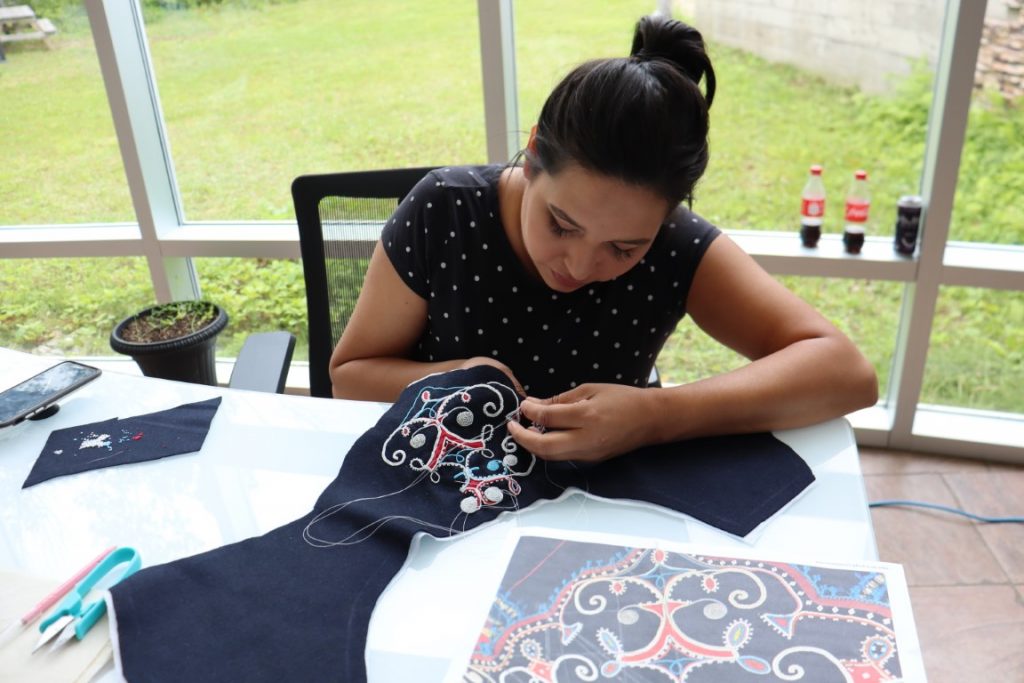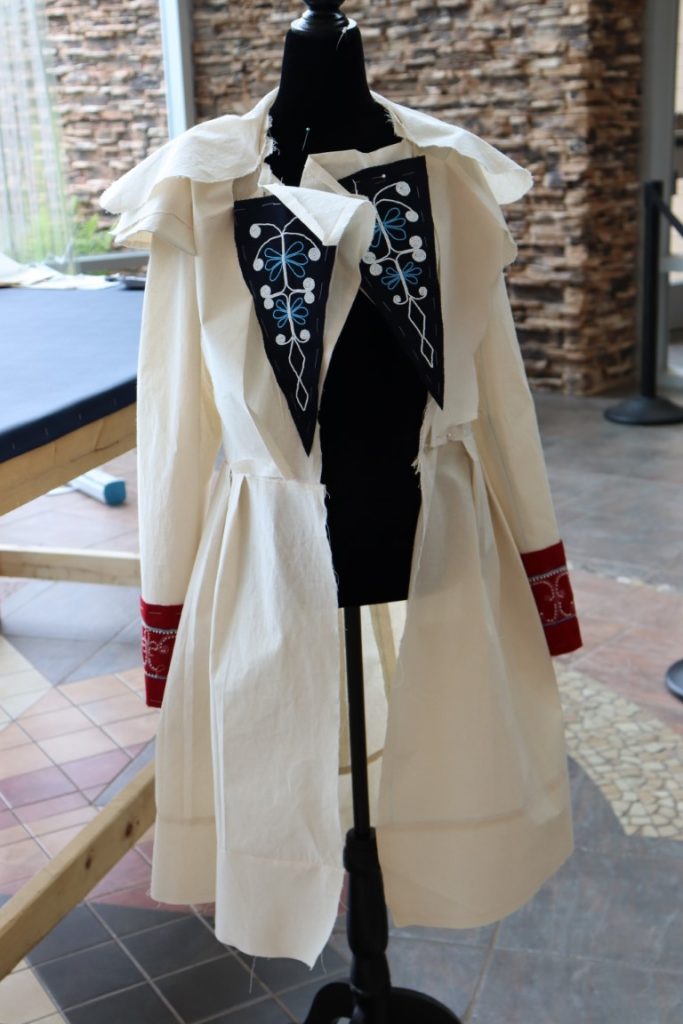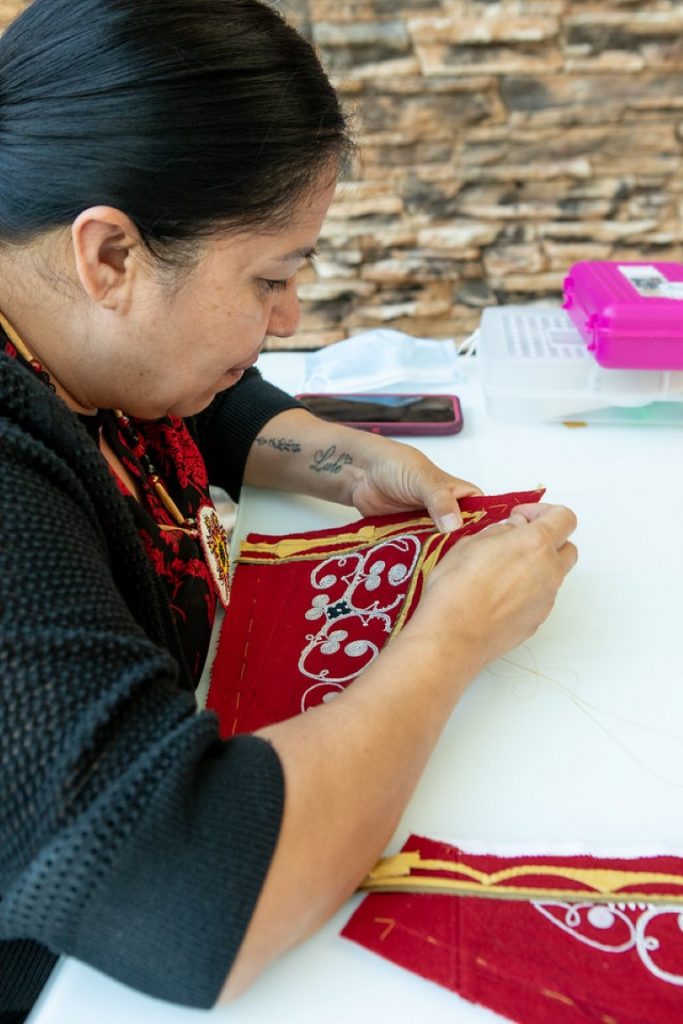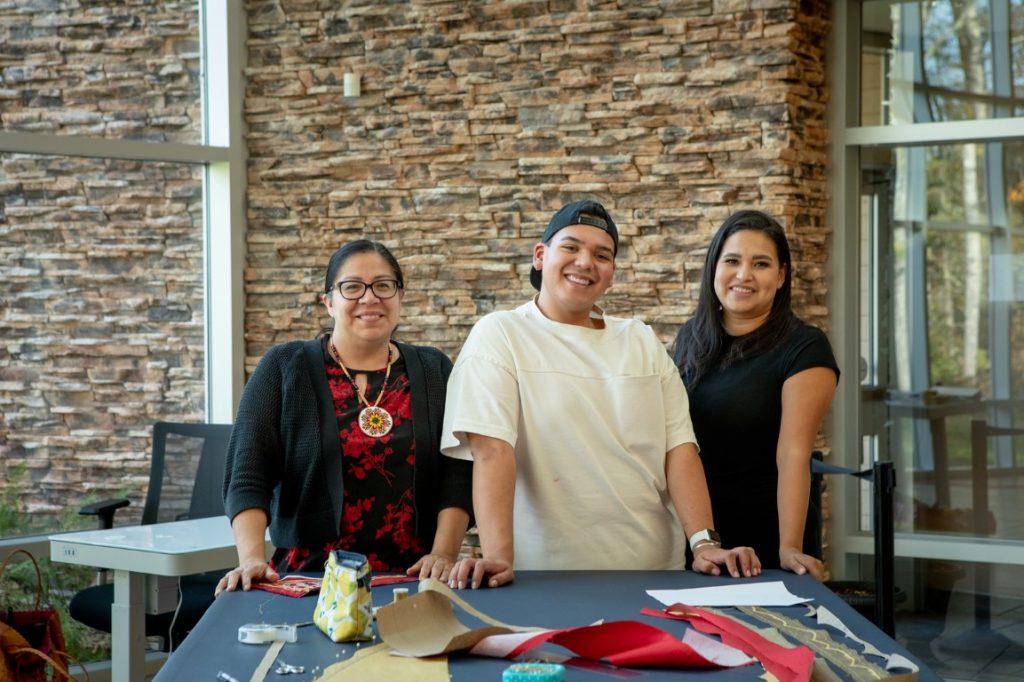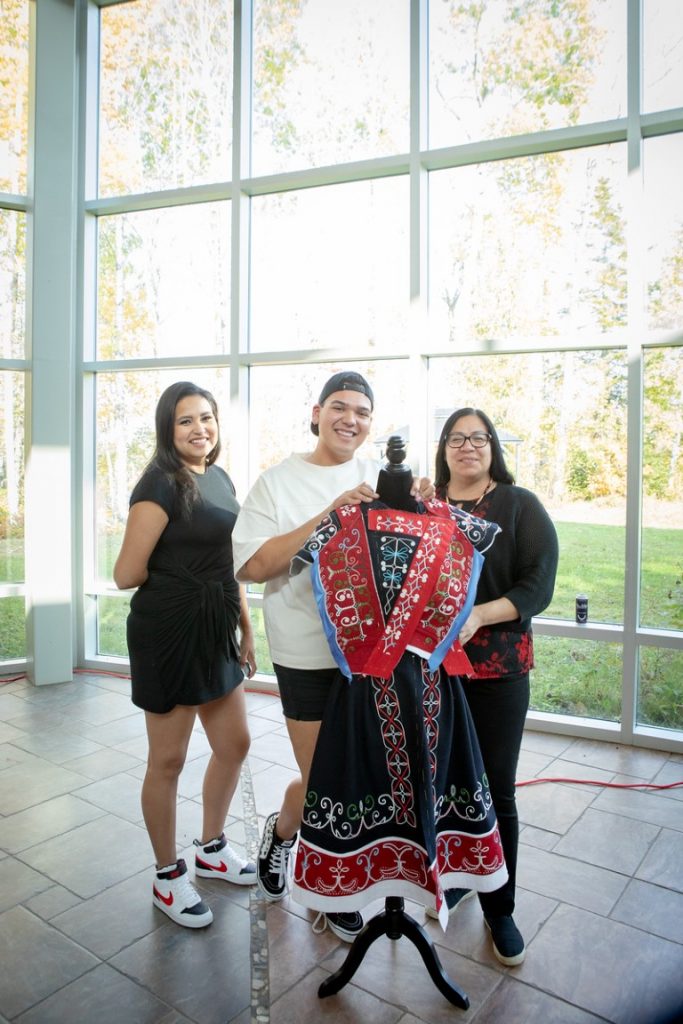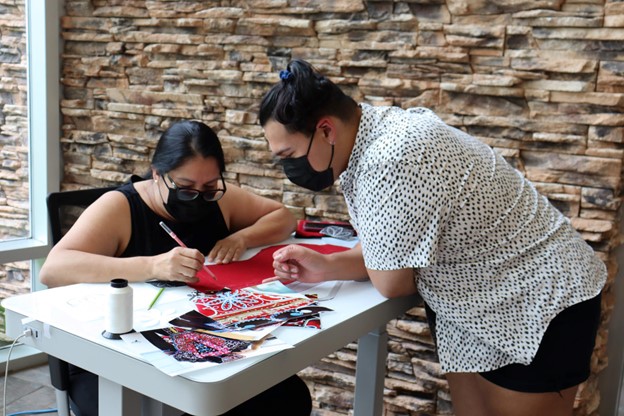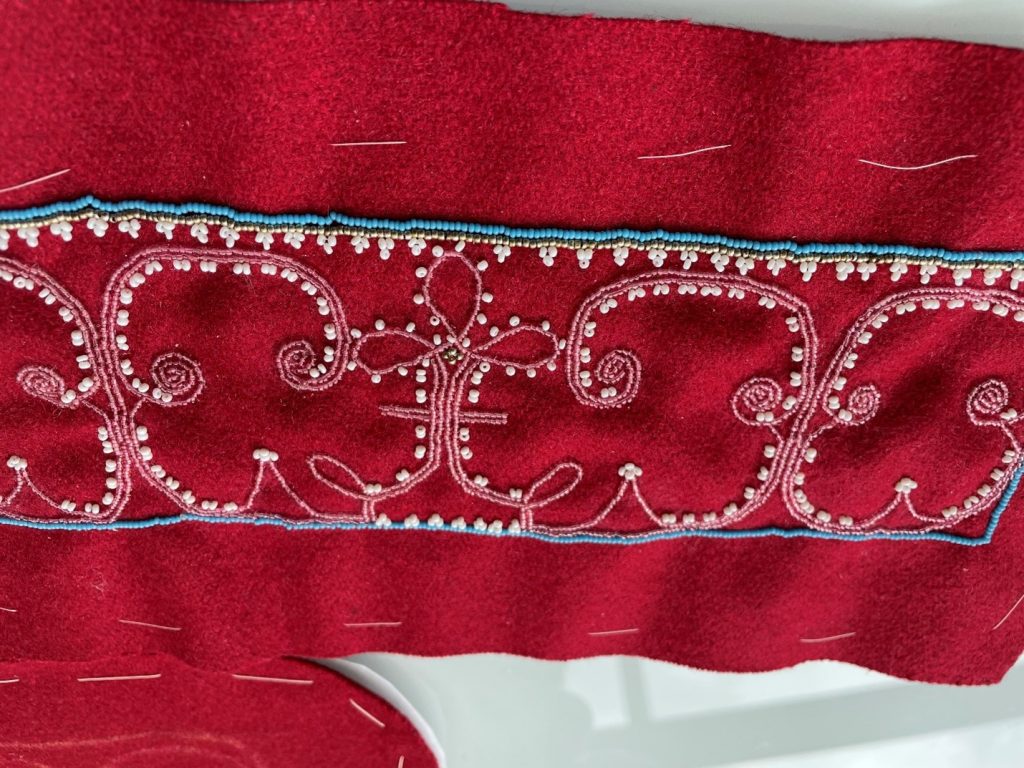The Recreation of Captain O’Halloran’s Outfit
In the early 1840s, the 69th Regiment of Foot Captain Henry Dunn O’Halloran took census information on Mi’kmaq along the Miramichi River under the supervision of New Brunswick Indian Commissioner Moses Perley. O’Halloran was studying Mi’kmaq language and culture in his travels. He brought to London with him a book of Mik’maq hieroglyphic prayers and drawings.
Out of gratitude for his services, O’Halloran was made an honorary Mi’kmaq chief by Chief Joseph Maly Itkobitch and presented a ceremonial outfit made by three Mi’kmaq women artists along the Miramichi (most likely in Esgenoôpetitj First Nation). The outfit consisted of a blue cloth frock coat with silk appliques, encrusted with double-curve beadwork, blue cloth leggings, beadwork moccasins, a tobacco pouch in the shape of a beaver with four red cloth tabs covered with beadwork, and a hooded headdress with beadwork Union Jacks and gold braids on both sides. He was also given a knife with a birchbark and blue cloth sheath, a pipe with stone bowl featuring a carved effigy of a man’s head and a beaver climbing up the side, and a tomahawk with a stone head.
The women who created the outfit were not acknowledged by O’Halloran or in any of the historical documentation, but it is almost a certainty that he knew the women who created it. The story of this outfit and cultural cross-point has been centred around O’Halloran and other men — but women are vital to this story, and it is their handiwork that persists today. Stephen Augustine, Mi’kmaq curator of Maritime Ethnography at the Canadian Museum of History suggests via oral history that two of the women may have been Annie Ginnish and Christina Morris, but he acknowledges that the research on this is inconclusive.
The outfit, items and documents were taken back to England by O’Halloran and remained in possession of the O’Halloran family, until in 1977 O’Halloran’s great-great granddaughter had it auctioned by Phillips in London. Phillips sold the outfit to the Canadian Museum of History in Gatineau for $58,650 CAD and it has remained there as part of their permanent collection.
Today, in 2021, a group of Mi’kmaq artists are creating a replica of the outfit at Metepenagiag Heritage Park. They have been hard at work this summer, sewing, beading, and collaborating to create the intricate designs featured on the ceremonial outfit. The artists involved are Sgoagani Mye Wecenisqon from Esgenoôpetitj First Nation, Oakley Wysote Gray from Listiguj First Nation, and Ingrid Brooks from Indian Island First Nation. All are graduates of the New Brunswick College of Craft and Design. Visitors to the park can chat with the artists, see their work in person, and observe their process. The project is set to be finished in the fall.
Come and visit the Metepenagiag Heritage Park, home of two Indigenous archaeological National Historic Sites, in Red Bank (Route 420) from the City of Miramichi and see the coat and its accessories being recreated from Tuesday to Thursday every week.
Tel: 1-506-836-6118
Website: https://www.metpark.ca/
Location: Metepenagiag Heritage Park, 2156 Micmac Road, Red Bank, NB E9E 2P2
